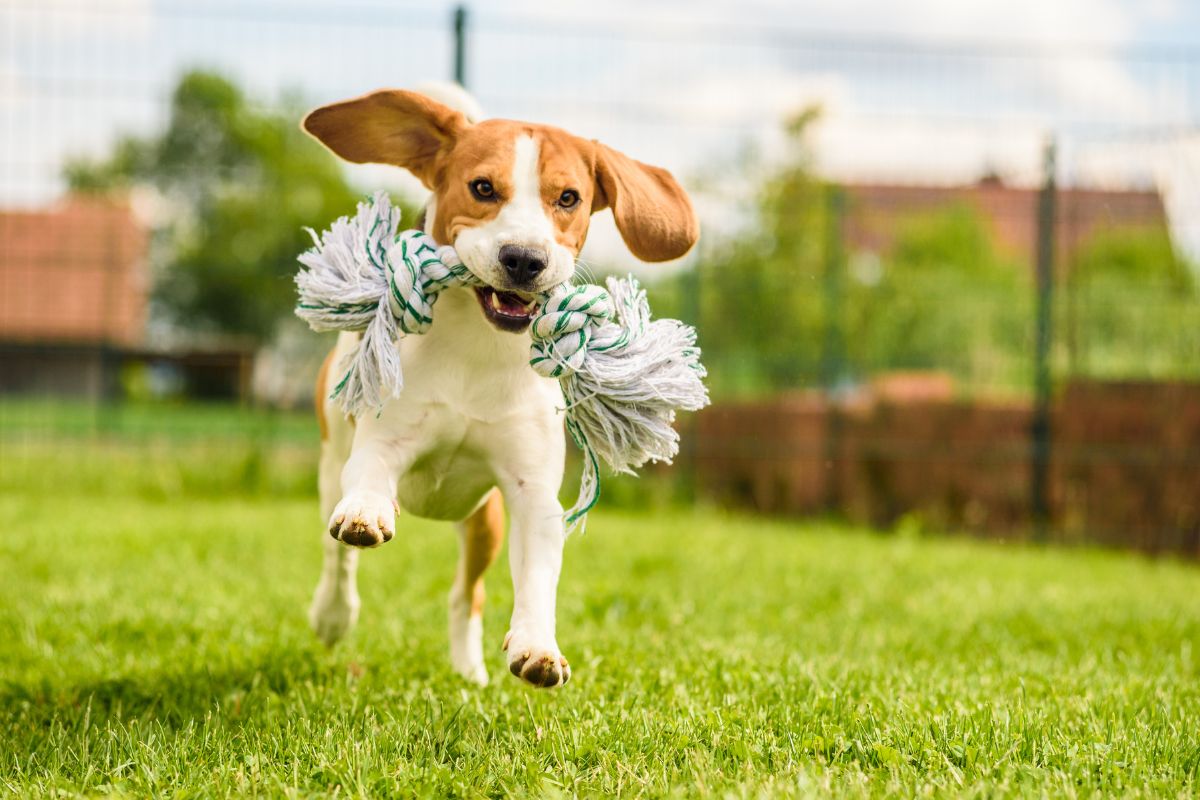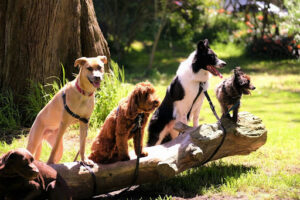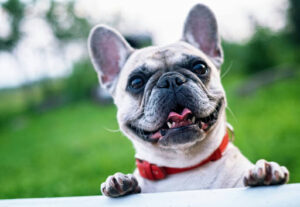In the hustle and bustle of today’s fast-paced world, where our lives are often marked by hectic schedules and constant activity, there’s one steadfast companion who stands by our side, offering unwavering loyalty and unconditional love – our furry friends. Whether your faithful companion is a bounding bundle of energy or a more serene and contemplative soul, one thing holds true for all dogs: ensuring they remain active is not just a choice but a fundamental responsibility that directly impacts their overall well-being and happiness.
So read our comprehensive guide on How to Make Your Dog Active, where we’ll delve deep into the world of canine activity, health, and happiness. This article is designed to be your trusted companion on this journey, offering a wealth of knowledge, effective strategies, and practical advice that will empower you to become the best possible steward of your dog’s well-being.
Our canine companions, with their boundless enthusiasm, inquisitive spirits, and wagging tails, bring immeasurable joy into our lives. Yet, their happiness and vitality are intricately tied to their ability to engage in physical and mental activities that align with their natural instincts and unique personalities.
Benefits of Keeping Your Dog Active
Maintaining an active lifestyle for your dog brings forth a plethora of benefits:
Physical Fitness: Regular activity helps your dog maintain a healthy weight and strong muscles.
Mental Stimulation: Active dogs are mentally engaged, reducing the risk of boredom and behavioral issues.
Bonding Time: Activity with your dog strengthens the bond between you and your furry friend.
Improved Digestion: Exercise aids in proper digestion and reduces the risk of gastrointestinal problems.
Enhanced Socialization: Active dogs are more social and well-behaved around other dogs and people.
Stress Reduction: Activity releases endorphins, helping your dog stay relaxed and happy.
Understanding Your Dog’s Activity Needs
Every dog is unique, and their activity requirements can vary based on factors like breed, age, and health condition. To effectively cater to your dog’s needs, consider the following:
Breed and Size: Larger breeds often require more exercise than smaller ones. For instance, a Border Collie will need more activity than a Shih Tzu.
Age: Puppies have endless energy, while senior dogs may require gentler exercises. Adjust your activities accordingly.
Health Condition: If your dog has specific health concerns, consult your vet for tailored activity recommendations.
Activities for Physical Exercise
Walking: Regular walks are the cornerstone of physical activity for most dogs. Aim for at least 30 minutes to an hour of walking daily, depending on your dog’s breed and age.
Running: For high-energy breeds like Greyhounds or Labradors, running or jogging can be a fantastic way to expend excess energy. Ensure your dog is in good physical condition before starting a running routine.
Fetch: Playing fetch in your backyard or at the park is an excellent way to combine physical exercise with mental stimulation. Use a favorite toy or ball for added excitement.
Agility Training: If you have an active and intelligent breed, consider agility training. It not only provides exercise but also challenges your dog’s problem-solving skills.
Hiking: Venture into the great outdoors by taking your dog on hikes. The varied terrain and new smells make hiking a stimulating experience for them.
Swimming: Many dogs love swimming. It’s a low-impact exercise that’s gentle on joints and perfect for hot days.
Mental Stimulation for Your Dog
Physical exercise is essential, but don’t forget about mental stimulation. Engaging your dog’s mind is equally important.
Puzzle Toys: Invest in puzzle toys that dispense treats when your dog figures out how to solve them. This keeps their brains active and sharp.
Hide and Seek: Hide treats or toys around your home, and encourage your dog to find them. This game taps into their natural hunting instincts.
Obedience Training: Regular training sessions are not only mentally stimulating but also reinforce good behavior.
Creating a Daily Activity Routine
Consistency is key when it comes to keeping your dog active. Establish a daily routine that includes a mix of physical and mental activities. For example:
Morning walk or jog: It’s an excellent way to kickstart your dog’s day.
Midday playtime: If possible, take a break during the day to engage in midday playtime with your dog.
Afternoon training session: Incorporate an afternoon training session into your routine to continue mental stimulation.
Evening fetch or puzzle toy time: Wind down your day with some evening playtime that combines physical exercise and mental stimulation
Bedtime Routine: End the day with a calming bedtime routine to signal that it’s time to relax and sleep
The Role of Diet in Dog Activity
The saying “you are what you eat” applies to our canine companions as well. Diet plays a crucial role in not only maintaining your dog’s overall health but also in their activity levels. Here’s how the right diet can contribute to making your dog active:
Choose High-Quality Dog Food: Selecting the right dog food is the foundation of a healthy and active lifestyle for your furry friend. Consider the following factors when choosing dog food:
- Nutritional Content: Opt for dog food that meets your dog’s specific age, size, and breed requirements. Look for options that provide a balanced mix of protein, carbohydrates, and essential vitamins and minerals.
- Protein Quality: Ensure that the food contains high-quality protein sources, such as real meat, as this supports muscle development and energy levels.
- Avoid Fillers: Avoid dog foods with excessive fillers like corn, wheat, and soy, which offer little nutritional value and can contribute to weight gain.
Portion Control: Proper portion control is essential to prevent overeating and weight gain:
- Follow Feeding Guidelines: Refer to the feeding guidelines provided on the dog food packaging. These guidelines are usually based on your dog’s weight and activity level.
- Measure Portions: Use a measuring cup to ensure you’re providing the correct portion size. Avoid free-feeding, which can lead to overeating.
Consider Treats: Treats can be an excellent tool for reinforcing positive behavior and providing extra motivation during training. However, it’s crucial to use treats wisely:
- Healthy Treats: Choose healthy treats that are low in calories and made from high-quality ingredients. Look for options that are specifically designed for training.
- Portion Control: Be mindful of the number of treats you give your dog each day. Treats should complement their regular diet, not replace it.
Hydration: Proper hydration is essential to support your dog’s activity levels:
- Always Provide Fresh Water: Ensure that your dog has access to clean, fresh water at all times, especially after exercise.
- Monitor During Activity: Pay attention to your dog’s water intake during and after physical activity, as they may need more fluids.
Consult Your Veterinarian: It’s essential to consult your veterinarian to determine the best diet plan for your dog’s specific needs:
- Weight Management: If your dog needs to lose or gain weight, your vet can provide guidance on adjusting their diet.
- Special Dietary Needs: Dogs with allergies, sensitivities, or specific health conditions may require specialized diets. Your vet can recommend suitable options.
- Age-Appropriate Nutrition: As your dog ages, their nutritional needs may change. Your vet can advise on age-appropriate diets and supplements.
By providing your dog with a balanced and appropriate diet, you not only support their overall health but also contribute to their energy levels and activity.
Overcoming Common Challenges
Keeping your dog active can sometimes be challenging, but with the right strategies, you can overcome common obstacles:
Weather: On rainy or extremely hot days, indoor activities like indoor fetch or interactive toys can save the day.
Busy Schedule: If you have a hectic schedule, consider hiring a dog walker or enlisting the help of a trusted friend or family member.
Lack of Space: Living in a small apartment? Focus on mental exercises, like obedience training, to keep your dog engaged.
Interactive Toys and Tools
Investing in the right toys and tools can make a significant difference in your dog’s activity level:
Kong Toys: Fill these toys with treats to keep your dog entertained for hours.
Tug Toys: Tug-of-war is a fun and interactive game that most dogs enjoy.
Long Leash: For off-leash activities, a long leash gives your dog freedom while ensuring safety.
Safety Measures for Active Dogs
Ensuring the safety of your active dog is paramount to their well-being and enjoyment during physical and mental activities. Here are some essential safety measures to keep in mind:
Leash and Harness: When taking your dog for walks or runs, using a leash and harness is essential for their safety and your control.
- Proper Fit: Ensure that the leash and harness fit your dog comfortably and snugly. It should be secure but not too tight.
- Choose the Right Leash: Select an appropriate leash length for your dog’s size and behavior. Retractable leashes may not provide enough control for active dogs.
- Training: Train your dog to walk calmly on a leash. Use positive reinforcement to encourage good leash manners.
Identification: Active dogs may be more likely to explore their surroundings, increasing the risk of getting lost.
- ID Tags: Ensure your dog wears a collar with identification tags containing your contact information. This is crucial if they ever wander away from you.For quality options, consider exploring pet tags Australia for durable and reliable choices.
- Microchipping: Consider microchipping your dog as an extra precaution. Microchips provide a permanent form of identification.
- Regular Check: Periodically check that your dog’s collar and tags are secure and legible.
Weather Considerations: Extreme weather conditions can pose risks to your active dog’s health.
- Hot Weather: In hot weather, avoid walking your dog during the hottest part of the day. Provide plenty of water, and be mindful of hot pavement that can burn their paws.
- Cold Weather: In cold weather, protect your dog from extreme cold with a warm coat or sweater. Check their paws for signs of ice accumulation and use pet-safe ice melt on icy surfaces.
Hydration: Active dogs can become dehydrated quickly, especially during vigorous exercise.
- Water Access: Always carry water and a collapsible bowl when you’re out with your dog. Encourage them to drink regularly, especially on warm days.
- Signs of Dehydration: Be aware of signs of dehydration, including excessive panting, lethargy, and dark yellow urine. If you notice these signs, offer water and seek shade.
Traffic Safety: When walking or jogging with your dog near roads, there’s a risk of traffic accidents.
- Use Leash and Stay Alert: Keep your dog on a leash and stay alert for approaching vehicles. Teach your dog to stay close to you during walks.
- Cross Safely: Use designated crosswalks and pedestrian crossings when crossing streets. Ensure your dog follows your lead.
- Reflective Gear: In low-light conditions, use reflective gear for both you and your dog to increase visibility.
Wildlife and Other Dogs: Encounters with wildlife or unfamiliar dogs can be unpredictable.
- Controlled Environment: Keep your dog on a leash in areas where wildlife encounters are possible, and follow leash laws in your area.
- Training: Ensure your dog has basic obedience training and recall commands to manage interactions with other dogs.
- Vaccinations: Keep your dog’s vaccinations up to date to minimize health risks from wildlife encounters.
First Aid Kit: Accidents can happen during active play or exercise.
- First Aid Kit: Carry a pet-specific first aid kit with essentials like bandages, antiseptic wipes, and tweezers for removing debris from wounds.
- Emergency Contact: Have your veterinarian’s contact information and the number for an emergency animal clinic on hand.
By implementing these safety measures, you can provide a secure and enjoyable environment for your active dog while ensuring their well-being.
The Importance of Vet Check-ups
Regular veterinary check-ups are a crucial component of ensuring your active dog’s health and well-being. Here’s why these check-ups are essential in making sure your dog stays active and vibrant:
Overall Health Assessment: Dogs can’t communicate when they are feeling unwell or in discomfort, making it essential to have a professional assess their health regularly.
- Physical Examination: During a vet check-up, your veterinarian will conduct a thorough physical examination to assess your dog’s overall health. They will check for any signs of illness, injury, or pain.
- Vital Signs: Monitoring vital signs such as heart rate, respiration rate, and body temperature can reveal underlying health issues.
- Weight Management: Your vet will also assess your dog’s weight and body condition, providing guidance on maintaining a healthy weight.
Vaccinations and Preventative Care: Preventing diseases and parasites is key to keeping your dog active and healthy.
- Vaccinations: Veterinarians administer essential vaccinations to protect your dog against potentially deadly diseases like rabies, distemper, and parvovirus.
- Parasite Control: Regular check-ups allow your vet to recommend and administer parasite control measures, including flea and tick prevention and deworming.
Dental Health: Dental issues can affect your dog’s overall health and activity level.
- Dental Assessment: Your vet will examine your dog’s teeth and gums for signs of dental disease during check-ups.
- Oral Hygiene: They can provide guidance on oral hygiene, including regular brushing and dental chews to maintain healthy teeth and gums.
- Professional Cleaning: If necessary, your vet may recommend a professional dental cleaning to remove plaque and tartar buildup.
Senior Dog Care: As dogs age, they may face specific health challenges that can impact their activity levels.
- Senior Wellness: For senior dogs, vet check-ups become even more critical. Your vet can screen for age-related issues such as arthritis, cognitive decline, and organ function.
- Pain Management: If your senior dog experiences pain or stiffness, your vet can prescribe pain management strategies to improve their comfort and mobility.
Nutrition Guidance: Maintaining an active lifestyle requires proper nutrition.
- Dietary Recommendations: Your vet can provide nutrition guidance tailored to your dog’s age, size, and activity level. This ensures they receive the right nutrients to support their active lifestyle.
- Weight Control: If your dog needs to lose or gain weight, your vet can help you develop a weight management plan.
Early Detection: Detecting health issues early is key to effective treatment.
- Routine Blood Work: Regular vet check-ups may include routine blood work that can detect underlying health conditions before they become symptomatic.
- Prompt Treatment: Early detection allows for prompt treatment, which can often be less invasive and more successful.
Behavioral Assessment: Behavioral changes can sometimes signal underlying health problems.
- Behavioral Evaluation: Your vet can assess any behavioral changes in your dog during check-ups. These changes can sometimes be related to pain, illness, or stress.
- Recommendations: Based on their assessment, your vet can recommend behavioral interventions or refer you to a professional dog trainer if needed.
Regular vet check-ups are the cornerstone of responsible pet ownership and play a crucial role in keeping your active dog healthy, happy, and active. They help identify and address health issues, provide preventative care, and ensure your dog receives the guidance and support needed for an active lifestyle.
Conclusion
In conclusion, keeping your dog active is a rewarding journey that benefits both you and your furry friend. By understanding their unique needs, providing a variety of physical and mental activities, and ensuring a balanced diet, you can enhance your dog’s quality of life. Remember, a happy and active dog is a healthy dog. So, get out there, have fun, and make your dog’s life active and vibrant!










